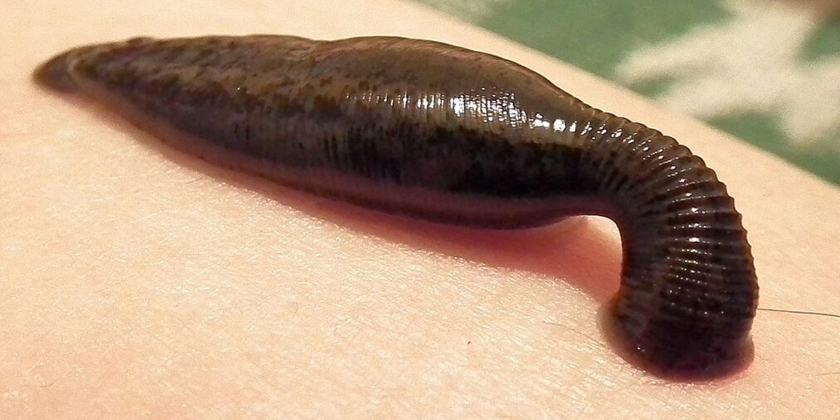Leech Treatment for Nerve Regeneration: Everything You Need to Know
What Is Leech Treatment for Nerve Regeneration?
Leech treatment for nerve regeneration involves the use of medicinal leeches (Hirudo medicinalis) with the theoretical aim of assisting nerve repair by enhancing blood flow and reducing inflammation. While the regenerative capabilities of leeches themselves have been extensively studied, direct human applications for nerve regeneration remain largely experimental and limited.
Why Leech Treatment Matters for Nerve Health
The regenerative abilities of the medicinal leech’s nervous system have drawn attention to leech treatment for nerve regeneration. A 2011 study in PLOS One demonstrated that severed axons in the leech central nervous system (CNS) can regenerate specific synaptic connections within weeks of injury. While direct human applications are still in the experimental phase, understanding the mechanisms behind leech regeneration may offer insights for innovative neural regeneration strategies in humans.
How Leech Treatment Supports Nerve Repair
Mechanisms in Leeches
Research on medicinal leeches has illuminated their remarkable regenerative prowess:
- Axon Regeneration: Severed axons in the leech CNS are known to reconnect accurately with their target neurons, leading to the restoration of function (Nature, 1971).
- Microglial Support: Post-injury, macrophage-like cells called microglia increase in number and play a role in guiding axons, thereby aiding neural regeneration (ScienceDirect, 1983).
- Molecular Factors: Nitric oxide synthase (NOS) activates rapidly after injury, potentially signaling nerve repair (Purdue University).
- Cannabinoids: Studies on the leech CNS suggest that endocannabinoids enhance neurite outgrowth via TRPV receptors (PLOS One, 2011).
Potential Human Applications
While the FDA has approved leech therapy for improving blood flow in reconstructive surgery (Healthline, 2024), its direct role in human nerve repair is less established and largely indirect:
- Improved Circulation: Hirudin, a potent anticoagulant in leech saliva, prevents blood clots, which can enhance blood flow to damaged tissues and potentially support nerve health (University Hospitals).
- Reduced Inflammation: Anti-inflammatory agents present in leech saliva may help reduce swelling around damaged nerves, which can be detrimental to nerve function.
- Pain Relief: Analgesic compounds in leech saliva have been noted to potentially alleviate neuropathy pain, as observed in some shingles treatments (The Leech Clinic).
A 2022 case study suggested that leech therapy, when combined with Ayurvedic treatments, improved scalp circulation in cases of folliculitis decalvans, potentially aiding nerve-related hair loss (Healthline). However, this is an indirect effect.
Benefits of Leech Treatment for Nerve Regeneration
Potential benefits of leech treatment for nerve regeneration are primarily inferred from studies on leeches and general principles of wound healing:
- Enhanced Blood Flow: Improved circulation supports oxygen and nutrient delivery to nerves, which is crucial for neural regeneration (University Hospitals).
- Inflammation Reduction: Reducing inflammation may protect nerves from further damage.
- Pain Management: Analgesic properties may offer relief from nerve pain, enhancing patient comfort (The Leech Clinic).
- Research Insights: Studies on leech regeneration provide valuable information that can inform future human neuropathy treatment strategies (PLOS One).
Risks and Limitations
Leech treatment for nerve regeneration comes with significant limitations and risks:
- Limited Human Evidence: The majority of data on nerve regeneration comes from studies on the leech CNS, not extensive human clinical trials (Nature).
- Infection Risk: Leeches naturally carry bacteria, most notably Aeromonas, necessitating antibiotic treatment to prevent infections (Cureus).
- Prolonged Bleeding: Leech bite sites can bleed for several hours, requiring careful monitoring (Healthline).
- Contraindications: Leech therapy is generally unsuitable for individuals with conditions such as anemia, clotting disorders, or during pregnancy (Healthline).
Claims regarding direct neural regeneration in humans through leech applications are largely experimental and should be approached with caution.
FAQs About Leech Treatment for Nerve Regeneration
- Can leech therapy directly repair human nerves? There is no direct evidence to support leech treatment for direct nerve regeneration in humans. Its potential benefit is primarily indirect, by improving circulation and reducing inflammation (Healthline).
- How does leech therapy help nerve health? It can improve blood flow and reduce inflammation, which may create a more favorable environment for nerve health and potential recovery (University Hospitals).
- Is leech therapy safe for neuropathy? It can be safe under strict medical supervision but carries infection risks. Consulting a doctor before considering this treatment is crucial (Cureus).
- What does research say about leeches and nerve repair? Research on the leech central nervous system shows impressive and precise axon regeneration. However, these findings are from leeches, and direct human applications for nerve repair remain unproven (PLOS One).
Conclusion: Exploring Leech Treatment for Nerve Regeneration
Leech treatment for nerve regeneration shows promise based on the remarkable regenerative abilities of the medicinal leech, as demonstrated in studies like those in PLOS One and Nature. While medicinal leeches can enhance blood flow and reduce inflammation, potentially supporting nerve health, direct human evidence for nerve regeneration is limited. Leech therapy should be considered an experimental adjunct rather than a primary solution for nerve repair. It is crucial to consult a neurologist to discuss its potential role in a comprehensive nerve repair plan.



